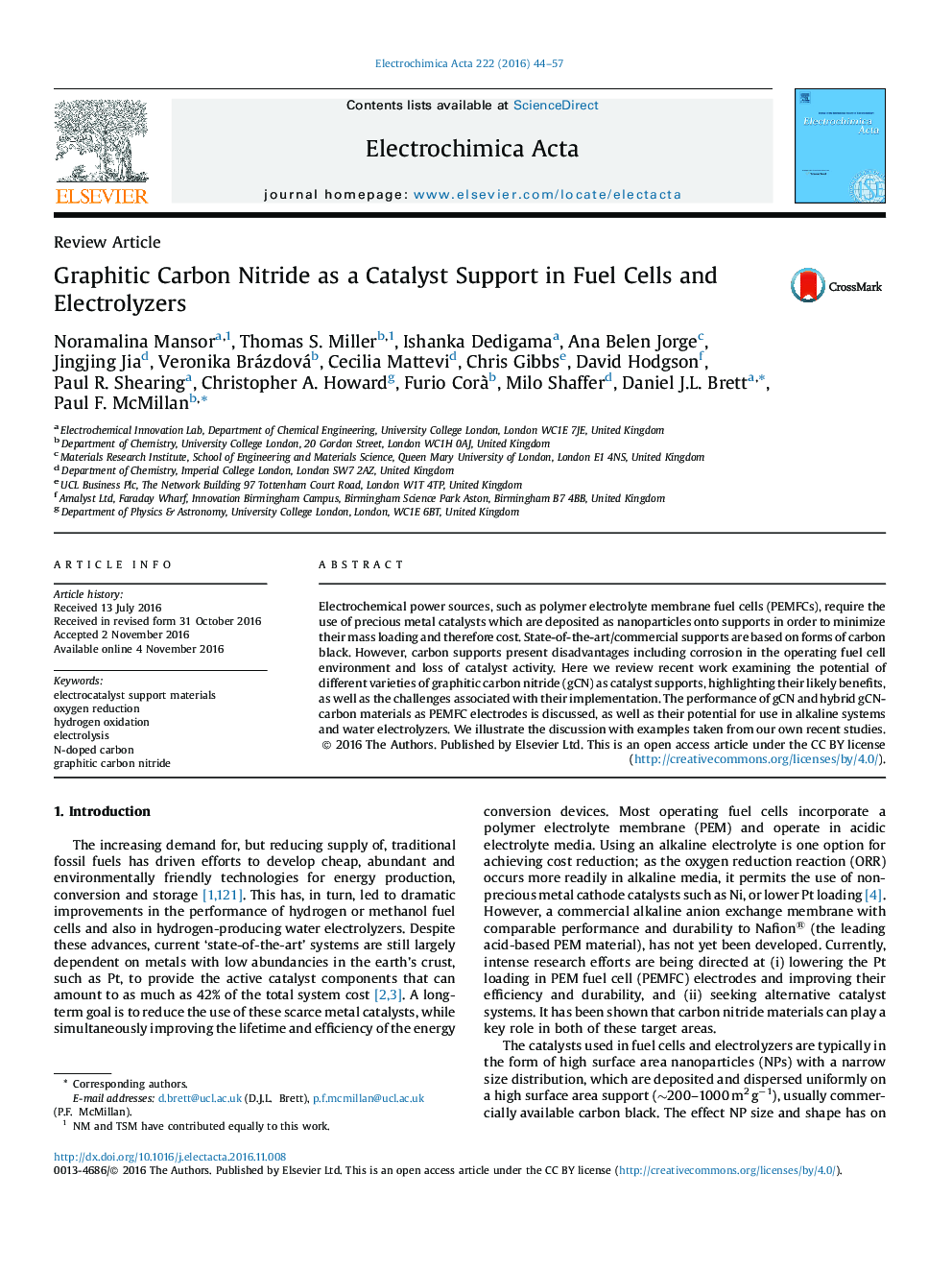| Article ID | Journal | Published Year | Pages | File Type |
|---|---|---|---|---|
| 6472506 | Electrochimica Acta | 2016 | 14 Pages |
â¢Graphitic carbon nitride (gCN) describes many materials with different structures.â¢gCNs can exhibit excellent mechanical, chemical and thermal resistance.â¢A major obstacle for pure gCN catalyst supports is limited electronic conductivity.â¢Composite/Hybrid gCN structures show excellent performance as catalyst supports.â¢gCNs have great potential for use in fuel calls and water electrolyzers.
Electrochemical power sources, such as polymer electrolyte membrane fuel cells (PEMFCs), require the use of precious metal catalysts which are deposited as nanoparticles onto supports in order to minimize their mass loading and therefore cost. State-of-the-art/commercial supports are based on forms of carbon black. However, carbon supports present disadvantages including corrosion in the operating fuel cell environment and loss of catalyst activity. Here we review recent work examining the potential of different varieties of graphitic carbon nitride (gCN) as catalyst supports, highlighting their likely benefits, as well as the challenges associated with their implementation. The performance of gCN and hybrid gCN-carbon materials as PEMFC electrodes is discussed, as well as their potential for use in alkaline systems and water electrolyzers. We illustrate the discussion with examples taken from our own recent studies.
Graphical abstractDownload high-res image (192KB)Download full-size image
